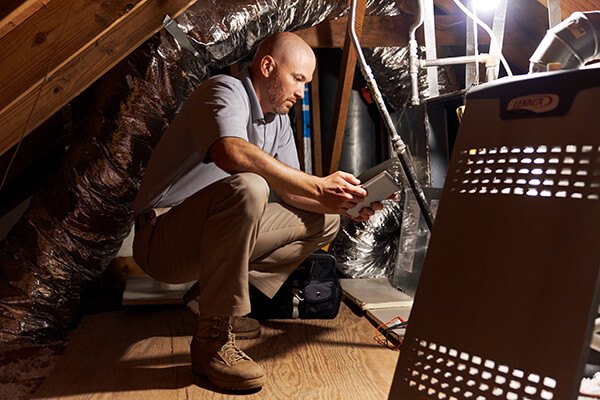A home’s furnace is one of its most important appliances. It keeps the whole family safely and comfortably warm in the winter when temperatures start to drop. When the furnace goes out, it can spell disaster for residents, especially during cold snaps. The good news is, there are Furnace Replacement services in Corona, CA that can help.
When to Replace a Furnace
A home furnace is a serious investment for most families, so it should come as no surprise that homeowners want to get as much use as possible out of these expensive appliances. Sometimes, though, it’s less cost-efficient to repair an aging or severely damaged furnace than it is to replace it.
A lot of homeowners follow the 50% rule of thumb, which states that if a repair will cost more than 50% of the price of a new appliance, it’s not worth the money. This rule of thumb isn’t supposed to be taken as gospel, though. There are plenty of circumstances where homeowners will save money in the long run by replacing their furnaces even if they do not require expensive repairs. The factors homeowners should consider include:
1. The Age of the Furnace
Modern furnaces are more energy-efficient than their older counterparts. To complicate matters further, even high-efficiency appliances start to lose efficiency and draw more power over time due to general wear and tear. If the furnace is more than 10 years old, chances are, it’s no longer operating at peak efficiency. Replacing it may help to lower homeowners’ monthly heating bills.
2. Frequency of Repairs
Considering the cost of one repair won’t give homeowners a full picture of how much it costs to keep an aging furnace running. If the unit seems to break down every season, even with preventative maintenance, the costs will add up. Furnaces that break down frequently should be replaced even if the repairs are seemingly minor as they often indicate more serious underlying problems.
3. Comfort Levels
There are few things more frustrating than spending a ton of money on heating only to find that one or more rooms of the home are still colder than residents would like, no matter how high the thermostat is set. Furnaces that can’t keep up with demand, cycle on and off constantly, or don’t produce even temperatures throughout the home should be replaced, not repaired.
Benefits of Replacing an Old Furnace
Homeowners who are still on the fence about whether to have a broken furnace repaired or replaced are rarely considering the full suite of benefits that come along with installing a new furnace. A Furnace replacement won’t just cut down on monthly bills. It will also:
- Produce less pollution
- Increase home comfort
- Reduce the need for costly repairs
- Improve indoor air quality
- Increase energy efficiency
- Save homeowners money in the long run
Types of Furnaces
Despite the recent proliferation of novel heating systems, furnaces remain the most popular option for residential homes. They’re more affordable, effective, and easier to install than geothermal heat pumps, and most homes already have the infrastructure in place to support them. When replacing a furnace, most homeowners choose a new unit that uses the same fuel type. For new construction, there are three options available:
Gas Furnaces
Gas furnaces run off of natural gas, though they still need some electricity. They’re the most common type of heating unit in the United States. Gas furnaces can be hooked up to the municipal gas lines, or they can be hooked up to on-site storage tanks if access to the grid is not available. The primary benefit of gas furnaces is that they boast the lowest operating costs.
Oil Furnaces
Oil furnaces used to be much more popular, but today, they’re pretty uncommon. The problem is, oil furnaces produce more pollution than their natural gas alternatives, and they’re no longer as affordable to operate as they once were. Most experts recommend against them.
Electric Furnaces
Homeowners with access to the electrical grid but no municipal gas supply may want to look into electric furnaces. They’re slightly more expensive to buy and install than natural gas-powered models, but depending on how the electricity is generated, they can be much more environmentally friendly. Plus, they don’t require a gas hookup.

